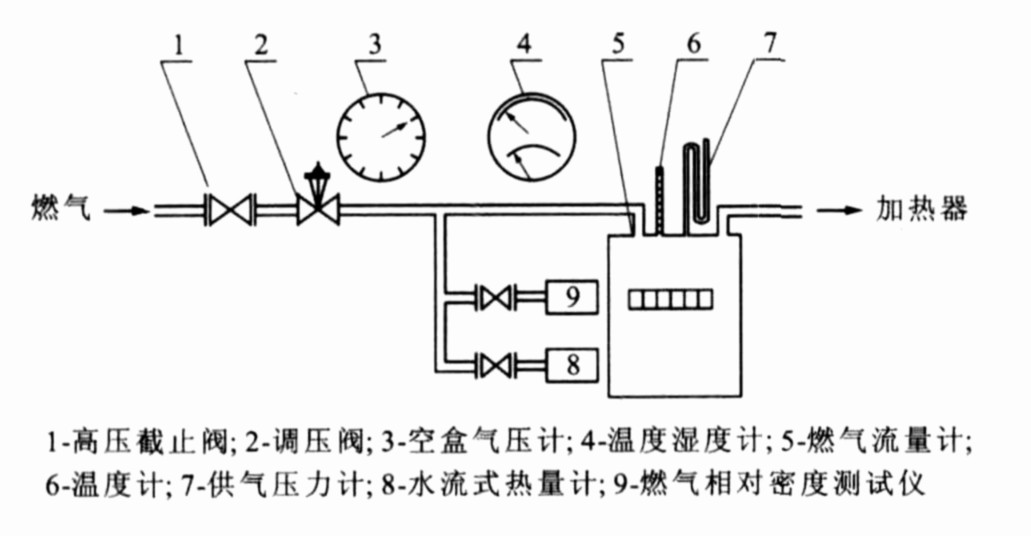Industry standard composition principles and general technology features of vehicle gas-fuel heater
Article Text (Baidu Translation)
-
摘要: 为推进车用燃气加热器产品开发, 规范产品性能及质量监管, 以燃气特性、燃烧理论、噪声测试原理、现代控制技术等理论为基础, 研究了国内外同类标准的排放、噪声、安全等指标及测试方法。研究发现, 将过量空气系数为1时废气中CO、NOx、HC的体积含量作为排放指标, 能够全面控制车用燃气加热器排放; 采用GB/T3767—1996能够客观准确测试产品工作噪声, 利用点火安全时间及熄火安全时间指标能有效控制产品的工作安全性。最后结合样机测试结果及国内外最新标准, 确定了中国汽车行业标准《汽车燃气加热器》(QC/T769—2006)中的技术指标及测试方法。实际应用证明, 该标准能够在安全性、电气特性、工作稳定性和可靠性等方面综合规范产品质量。Abstract: In order to promote the product development of vehicle gas-fuel heater and standardize the product performance and quality supervising management, the theories of gas characteristic, burning theory, noise testing principle and modern control technology were referred, and the indices and testing methods of vehicle emission, noise, safety in domestic and foreign similar standards were studied. It is pointed that the emissions of vehicle gas-fuel heater can be controlled effectively when the volume contents of CO, NOx and HC in vehicle emissions are taken as emission indices and excess air coefficient is 1, the product noise can be tested objectively and accurately when GB/T 3767—1996 is adopted, and the product work safety can be effectively controlled when ignition security time and flameout security time are taken as control indices. According to prototype test result and the latest domestic and foreign standards, the technical indices and testing methods in Chinese automobile industry standard of vehicle gas-fuel heater (QC/T 769—2006) are established, so that the standard can synthetically standardize the product quality in safety, electric characteristics, stability and reliability and so on.
-
表 1 样机测试值及有害气体限值比较
Table 1. Comparison of harmful gas limits and prototype test values
项目 CO NOx HC GB 6932—2001(α=1)[9] 1 000 100 BS EN 624:2000(α=1)[4] 1 000 JB/T 8127.2—1995(M)[10] 300 100 微量 样机1 α=1 260.00 66.60 6.19 G 0.312 0.243 0.000 样机2 α=1 157.00 70.70 3.14 G 0.248 0.192 0.000 样机3 α=1 594.00 42.59 19.60 G 0.837 0.102 0.016 本标准限值 α=1 700.00 100.00 30.00 G 1.000 0.300 0.020 注: α=1为过量空气系数为1时, 干废气中有害气体体积含量, 10-6; M为烟气实测值, 10-6; G为加热器排气污染物比排放量, g·(kW·h)-1。 -
[1] 张蓉平. 各国政府大力扶持燃气汽车[J]. 汽车与社会, 2000, 5(2): 24-26. https://www.cnki.com.cn/Article/CJFDTOTAL-QCSH200002011.htmZhang Rong-ping. Government supporting gas fueled vehicle in various countries[J]. Auto and Society, 2000, 5(2): 24-26. (in Chinese) https://www.cnki.com.cn/Article/CJFDTOTAL-QCSH200002011.htm [2] 白木, 周洁. 我国燃气汽车发展综述[J]. 交通标准化, 2002, 28(4): 39-41. https://www.cnki.com.cn/Article/CJFDTOTAL-JTBH200204010.htmBai Mu, Zhou Jie. Asummaryin developing of our gas fueled vehicle[J]. Communications Standardization, 2002, 28(4): 39-41. (in Chinese) https://www.cnki.com.cn/Article/CJFDTOTAL-JTBH200204010.htm [3] 赵侃. 汽车液体CNG加热器的研究与开发[D]. 西安: 长安大学, 2003. [4] BS EN624: 2000, specification for dedicated LPG appliances—roomsealed LPGspace heating equipment for installation in vehicles and boats[S]. [5] BS EN1949: 2002, specification for the installation of LPG systems for habitation purposes in leisure accommodation vehicles and in other road vehicles[S]. [6] GB16914—2003, 燃气燃烧器具安全通则[S]. [7] GB/T16411—1996, 家用燃气用具通用测试方法[S]. [8] QC/T324—2000, 汽车燃油空气加热器[S]. [9] GB6932—2001, 家用燃气快速热水器[S]. [10] JB/T8127.2—1995, 燃油加热器技术条件[S]. [11] JB/T8127.3—1995, 燃油加热器试验方法[S]. [12] 申福林, 张勇, 郭金刚. 汽车燃油空气加热器燃烧排放控制研究[J]. 中国公路学报, 2005, 18(4): 115-118. https://www.cnki.com.cn/Article/CJFDTOTAL-ZGGL200504023.htmShen Fu-lin, Zhang Yong, Guo Jin-gang. Research on emission control of vehicle fuel-fired air heater[J]. China Journal of Highway and Transport, 2005, 18(4): 115-118. (in Chinese) https://www.cnki.com.cn/Article/CJFDTOTAL-ZGGL200504023.htm [13] 申福林, 冯还红. 独立式汽车加热器噪声和排放性能评价方法研究[C]//申福林. 2004年中国客车学术年会论文集. 西安: 陕西科学技术出版社, 2004: 175-178. [14] JT/T216—2006, 客车空调系统技术条件[S]. [15] GB7528—2004, 机动车运行安全技术条件[S]. -





 下载:
下载:


